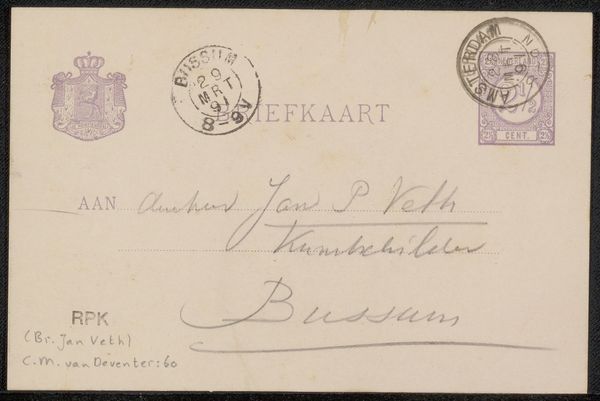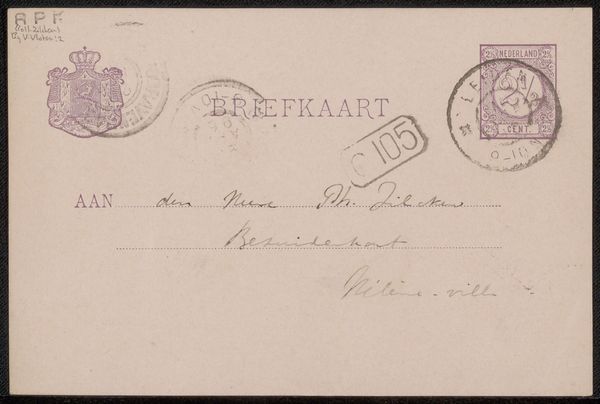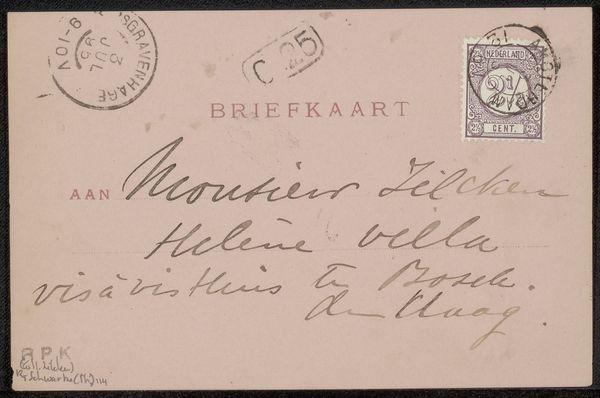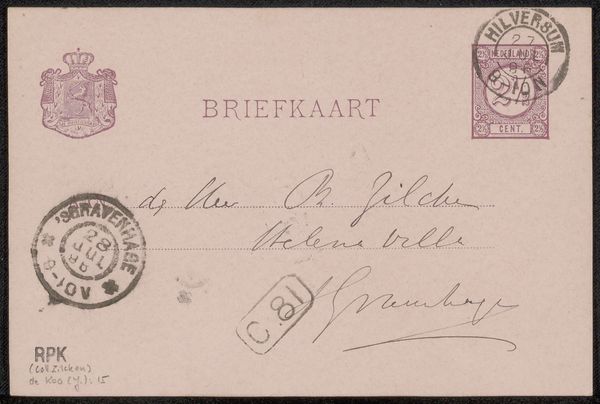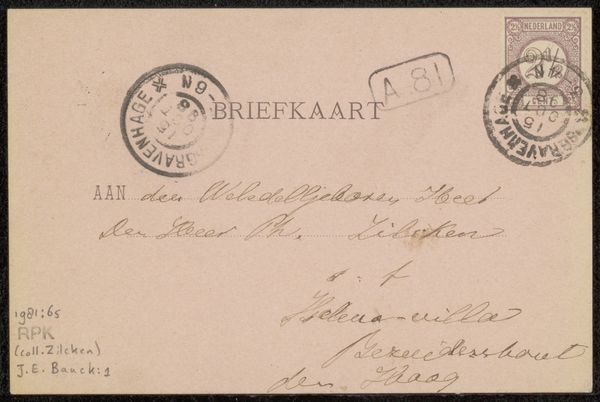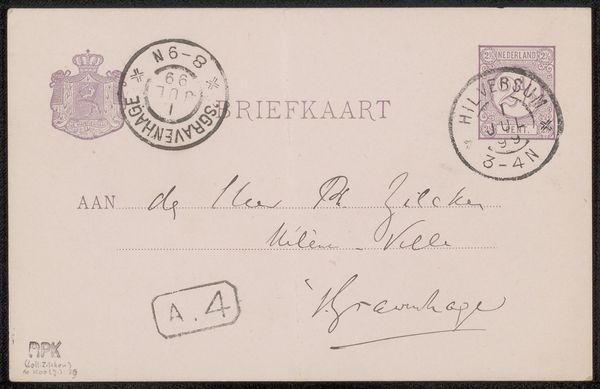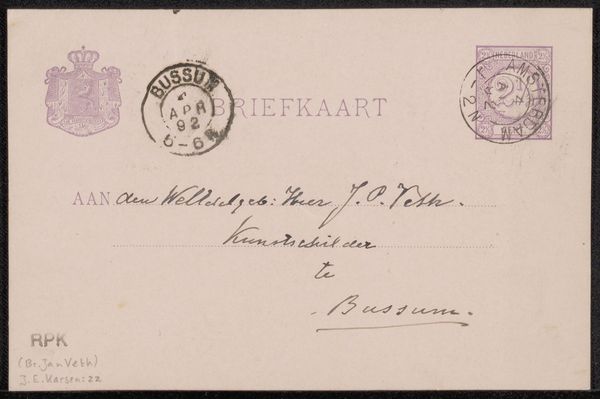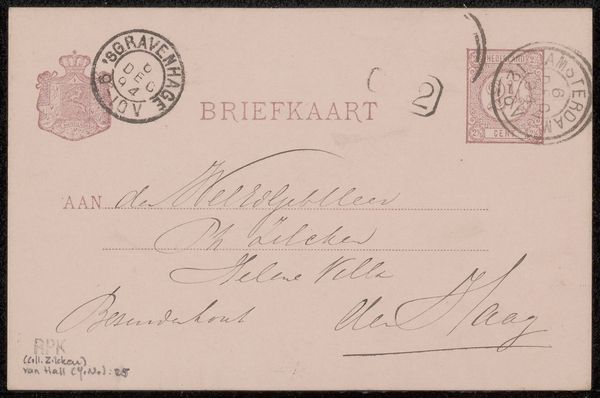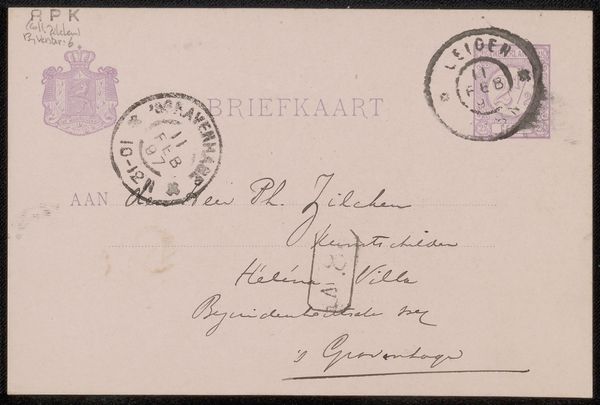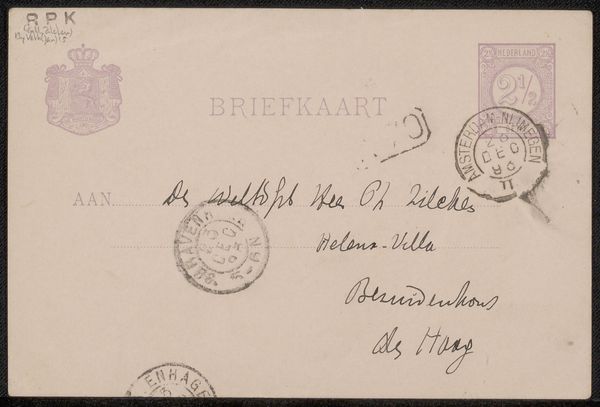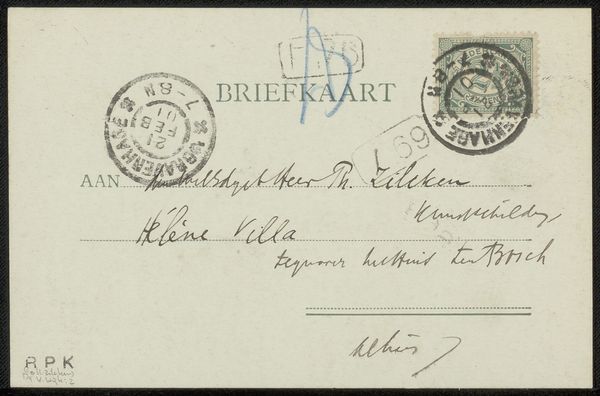
drawing, paper, ink
#
drawing
#
pen sketch
#
paper
#
ink
Copyright: Rijks Museum: Open Domain
Editor: This is "Briefkaart aan Jan Veth" by Isaac Israels, possibly from 1891, done in ink on paper. It's quite simple, really, just a postcard. What can we learn from it? Curator: More than one might initially think. Consider the social context of correspondence during this period. Who wrote letters? Who received them? The very act of sending a briefkaart, a postcard, implies a level of familiarity and perhaps even a specific socio-economic standing for both the sender and receiver. Jan Veth was himself an artist – "Kunstschilder" it says here – so, we have a dialogue between artists. Does this simple correspondence reveal anything about the artistic circles and power structures of the time? Editor: I suppose the ease of a postcard speaks to a certain level of privilege compared to letter writing. And yes, that he also indicates Veth as a 'Kunstschilder' indicates shared identities between the sender and the recipient. Do you think that the relative informality means that it is an unfiltered look into the mind of the artist? Curator: That's an interesting proposition. Consider the historical function of the letter, its power as both a form of intimacy and a carefully crafted performance of self. A postcard is immediate, certainly. But it still carries a deliberate intent. Whose stories were being amplified during this era, and whose voices were deliberately suppressed? It's important to consider what this artifact is actively doing within its socio-political environment. Perhaps even more importantly, what is it not saying? Editor: That’s a really interesting point. Looking at something so seemingly simple actually requires a very critical lens to fully understand it. Thanks for that insight. Curator: Indeed. By looking at it with that lens, we understand art for how it truly functions within society.
Comments
No comments
Be the first to comment and join the conversation on the ultimate creative platform.

